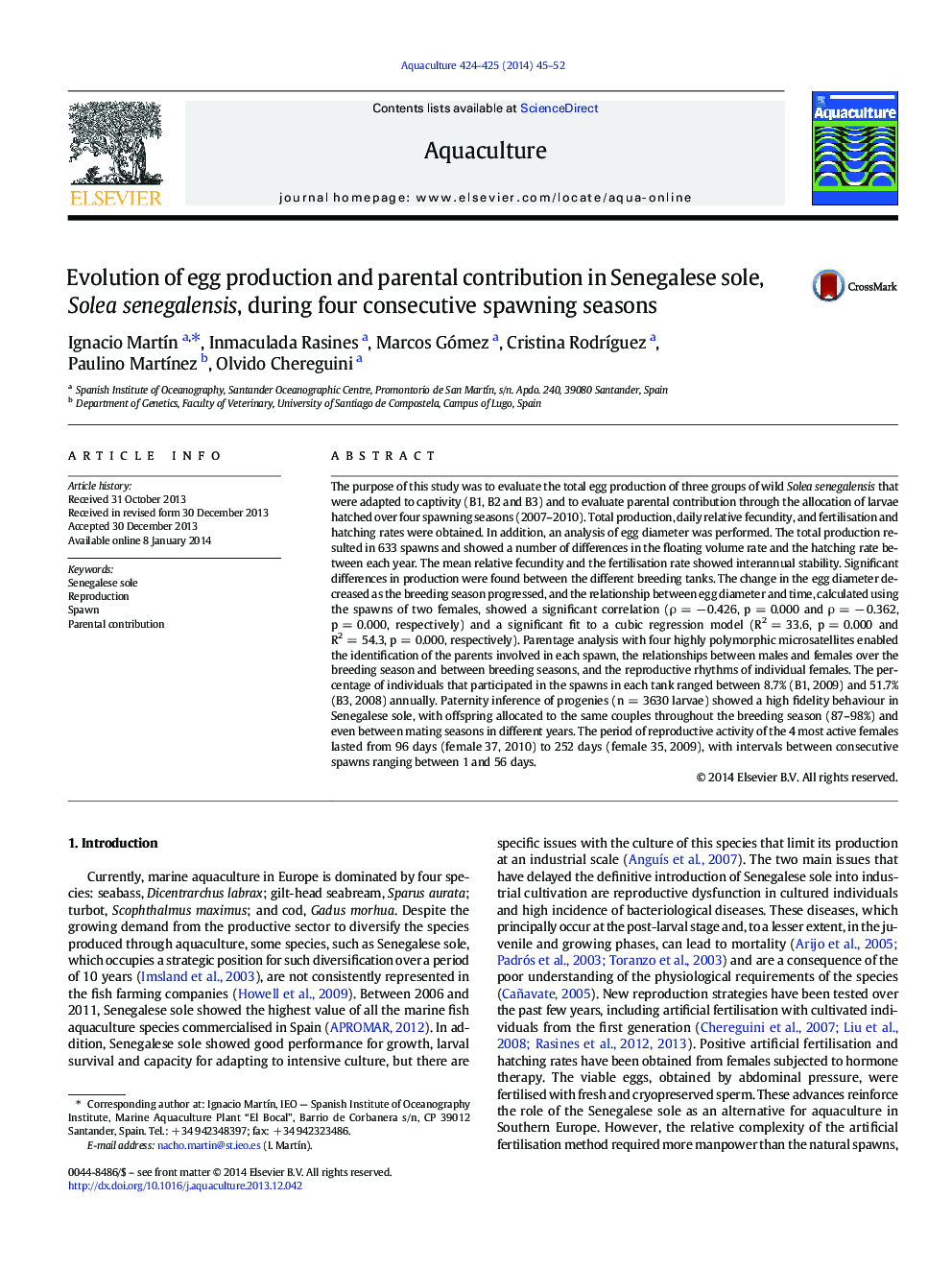| کد مقاله | کد نشریه | سال انتشار | مقاله انگلیسی | نسخه تمام متن |
|---|---|---|---|---|
| 8495265 | 1552860 | 2014 | 8 صفحه PDF | دانلود رایگان |
عنوان انگلیسی مقاله ISI
Evolution of egg production and parental contribution in Senegalese sole, Solea senegalensis, during four consecutive spawning seasons
دانلود مقاله + سفارش ترجمه
دانلود مقاله ISI انگلیسی
رایگان برای ایرانیان
موضوعات مرتبط
علوم زیستی و بیوفناوری
علوم کشاورزی و بیولوژیک
علوم آبزیان
پیش نمایش صفحه اول مقاله

چکیده انگلیسی
The purpose of this study was to evaluate the total egg production of three groups of wild Solea senegalensis that were adapted to captivity (B1, B2 and B3) and to evaluate parental contribution through the allocation of larvae hatched over four spawning seasons (2007-2010). Total production, daily relative fecundity, and fertilisation and hatching rates were obtained. In addition, an analysis of egg diameter was performed. The total production resulted in 633 spawns and showed a number of differences in the floating volume rate and the hatching rate between each year. The mean relative fecundity and the fertilisation rate showed interannual stability. Significant differences in production were found between the different breeding tanks. The change in the egg diameter decreased as the breeding season progressed, and the relationship between egg diameter and time, calculated using the spawns of two females, showed a significant correlation (Ï = â 0.426, p = 0.000 and Ï = â 0.362, p = 0.000, respectively) and a significant fit to a cubic regression model (R2 = 33.6, p = 0.000 and R2 = 54.3, p = 0.000, respectively). Parentage analysis with four highly polymorphic microsatellites enabled the identification of the parents involved in each spawn, the relationships between males and females over the breeding season and between breeding seasons, and the reproductive rhythms of individual females. The percentage of individuals that participated in the spawns in each tank ranged between 8.7% (B1, 2009) and 51.7% (B3, 2008) annually. Paternity inference of progenies (n = 3630 larvae) showed a high fidelity behaviour in Senegalese sole, with offspring allocated to the same couples throughout the breeding season (87-98%) and even between mating seasons in different years. The period of reproductive activity of the 4 most active females lasted from 96 days (female 37, 2010) to 252 days (female 35, 2009), with intervals between consecutive spawns ranging between 1 and 56 days.
ناشر
Database: Elsevier - ScienceDirect (ساینس دایرکت)
Journal: Aquaculture - Volumes 424â425, 20 March 2014, Pages 45-52
Journal: Aquaculture - Volumes 424â425, 20 March 2014, Pages 45-52
نویسندگان
Ignacio MartÃn, Inmaculada Rasines, Marcos Gómez, Cristina RodrÃguez, Paulino MartÃnez, Olvido Chereguini,